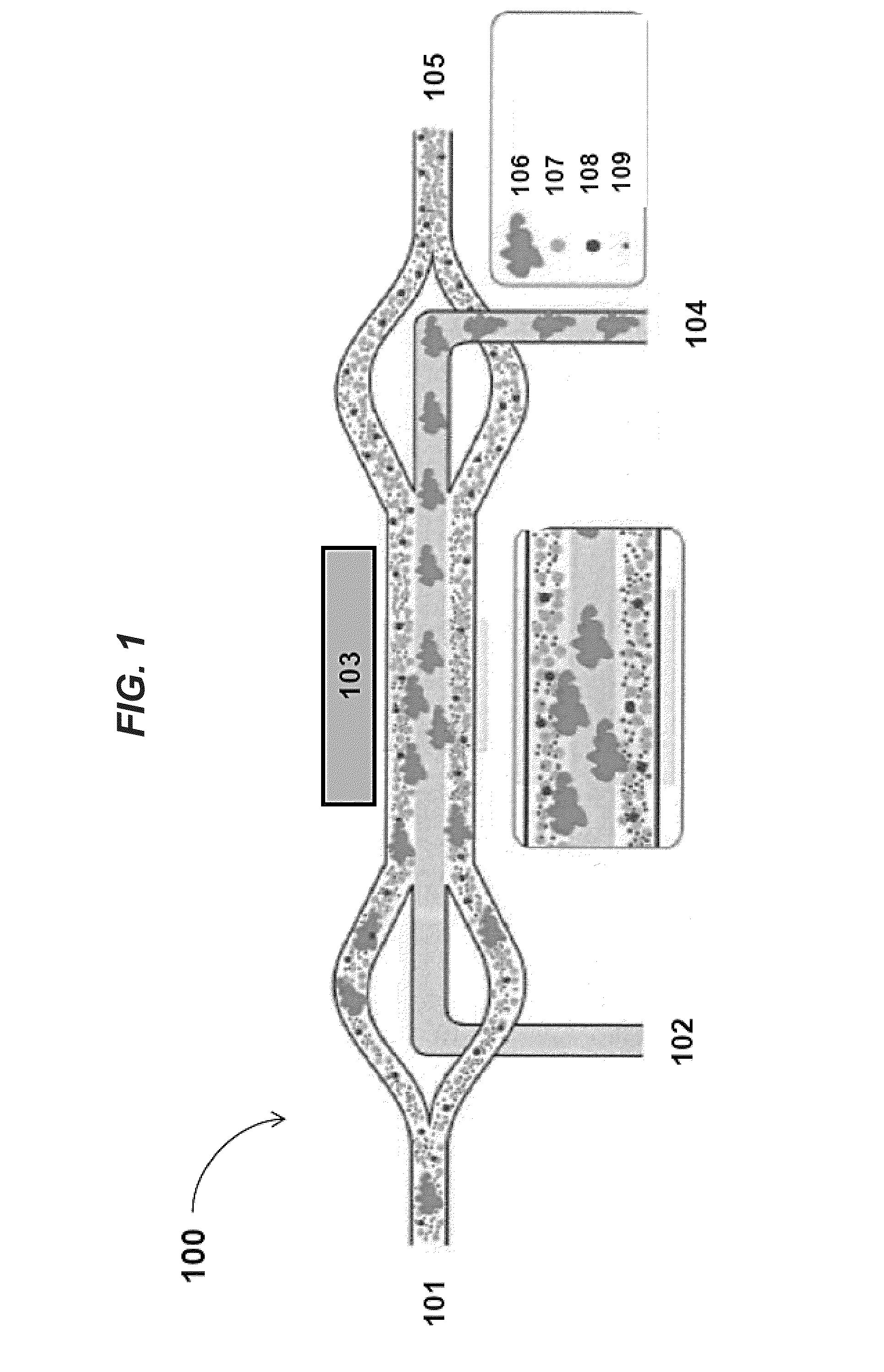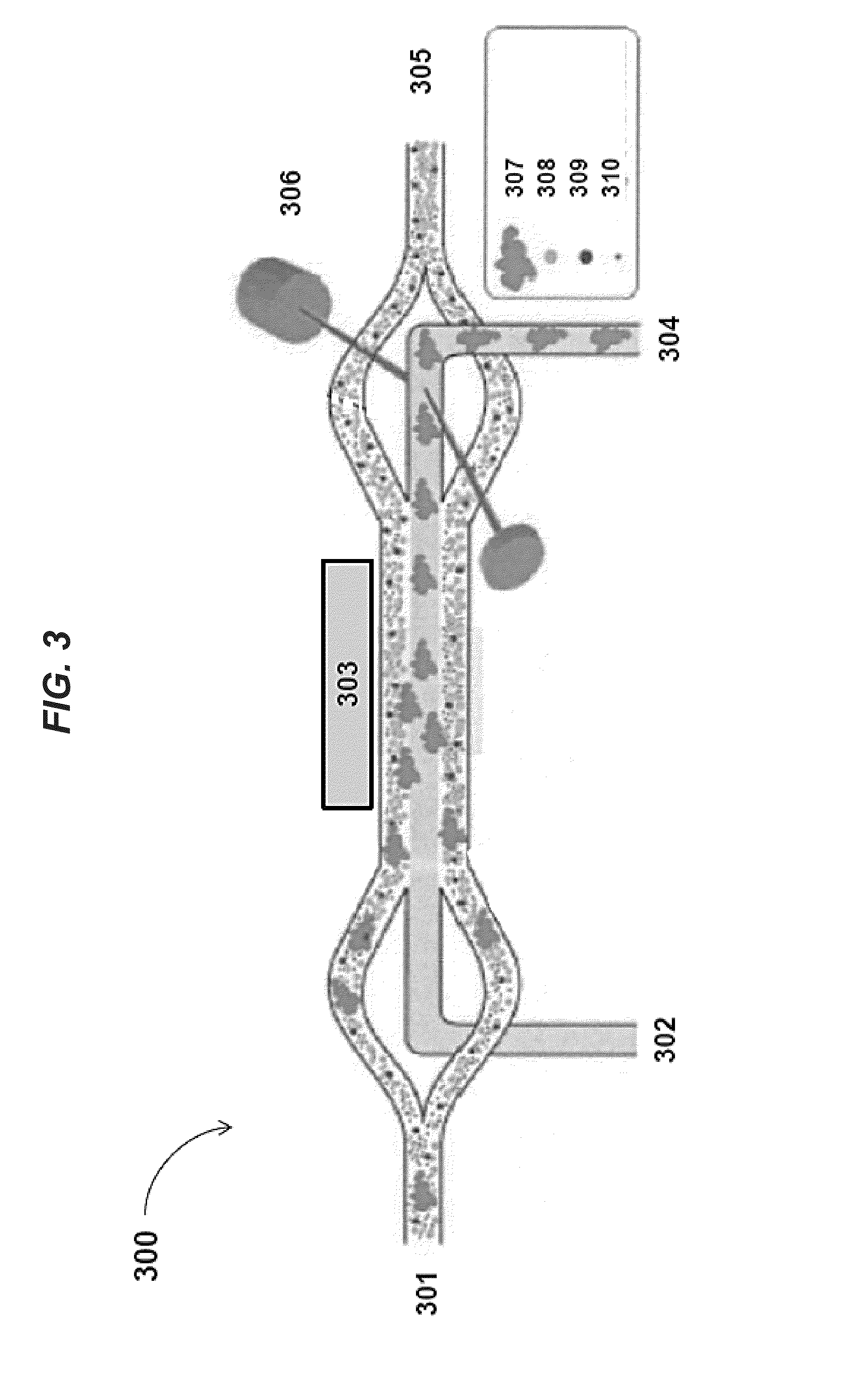Devices and methods for processing a biological sample
a biological sample and device technology, applied in the field of biological sample devices and methods, can solve the problems of difficult and inefficient disaggregation of complex biological samples, high probability of cells forming aggregates, and aggregation of cells
- Summary
- Abstract
- Description
- Claims
- Application Information
AI Technical Summary
Benefits of technology
Problems solved by technology
Method used
Image
Examples
example 1
[0198]FIGS. 9a-b shows images of separating particles of different sizes in an acoustic concentrator device at low flow rates (e.g., 4 μL / minute). In FIG. 9a, when the piezoelectric transducer is not activated and no acoustic radiation force is exerted on the flowing sample, inertial forces cause only a few large particles (diameter about 50 μm) to move to the center stream within the channel of the acoustic concentrator device. In contrast, in FIG. 9b, when the piezoelectric transducer is operated at a power level of about 200 mV, the applied acoustic standing wave exerts radiation pressure to focus larger components (e.g., particles having diameters of about 50 μm) to the center stream while smaller particles (diameters less than 50 μm) remain in the laminating flow along the sides of the acoustic concentrator device channel.
example 2
[0199]FIGS. 10a-b shows that degree of hydrodynamic focusing in the acoustic concentrator device can be regulated by the ratio of liquid being diverted to side streams vs. that exiting the center stream. By doing this, this ratio can be adjusted to optimized light scatter measured by the feedback monitor positioned near the outlet of the acoustic concentrator device channel. FIG. 10a illustrates cells remaining tightly focused into the collection region at the center of the channel. FIG. 10b, on the other hand, illustrates that cells arriving at the center outlet are significantly diffused. In some instances, a minimum flow of fluid exiting out of the center channel of the acoustic concentrator device may be necessary for the stream to remain hydrodynamically focused after exiting the space affected by the acoustic radiation pressure of the applied standing wave. Here, the ratio of flow exiting the side outlets as compared to that exiting the center outlet does not exceed 5:1.
PUM
 Login to View More
Login to View More Abstract
Description
Claims
Application Information
 Login to View More
Login to View More - R&D
- Intellectual Property
- Life Sciences
- Materials
- Tech Scout
- Unparalleled Data Quality
- Higher Quality Content
- 60% Fewer Hallucinations
Browse by: Latest US Patents, China's latest patents, Technical Efficacy Thesaurus, Application Domain, Technology Topic, Popular Technical Reports.
© 2025 PatSnap. All rights reserved.Legal|Privacy policy|Modern Slavery Act Transparency Statement|Sitemap|About US| Contact US: help@patsnap.com



